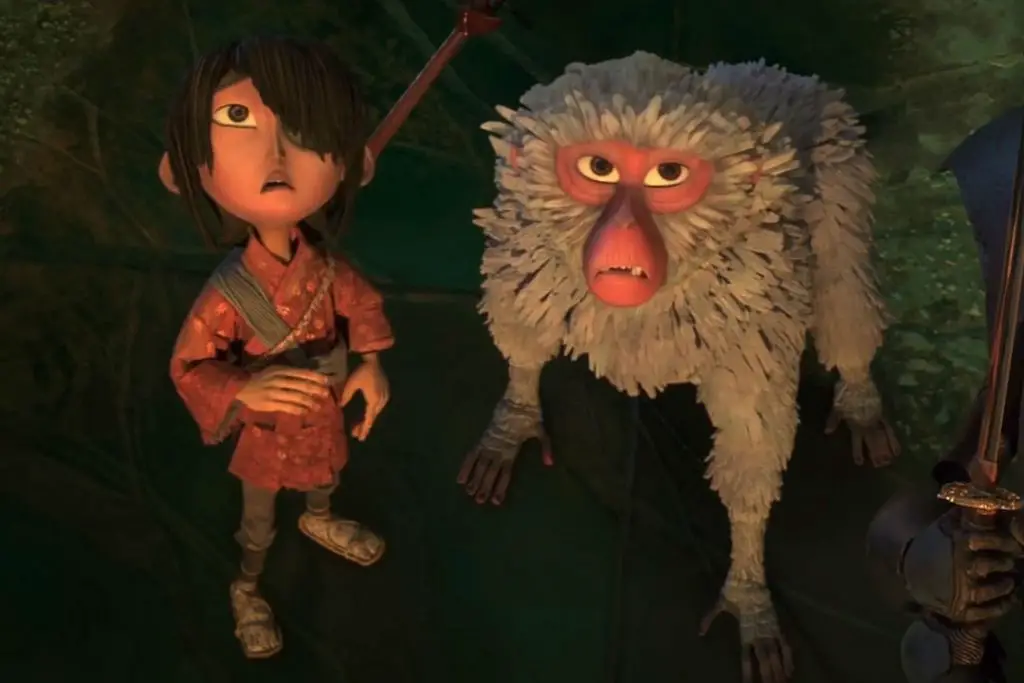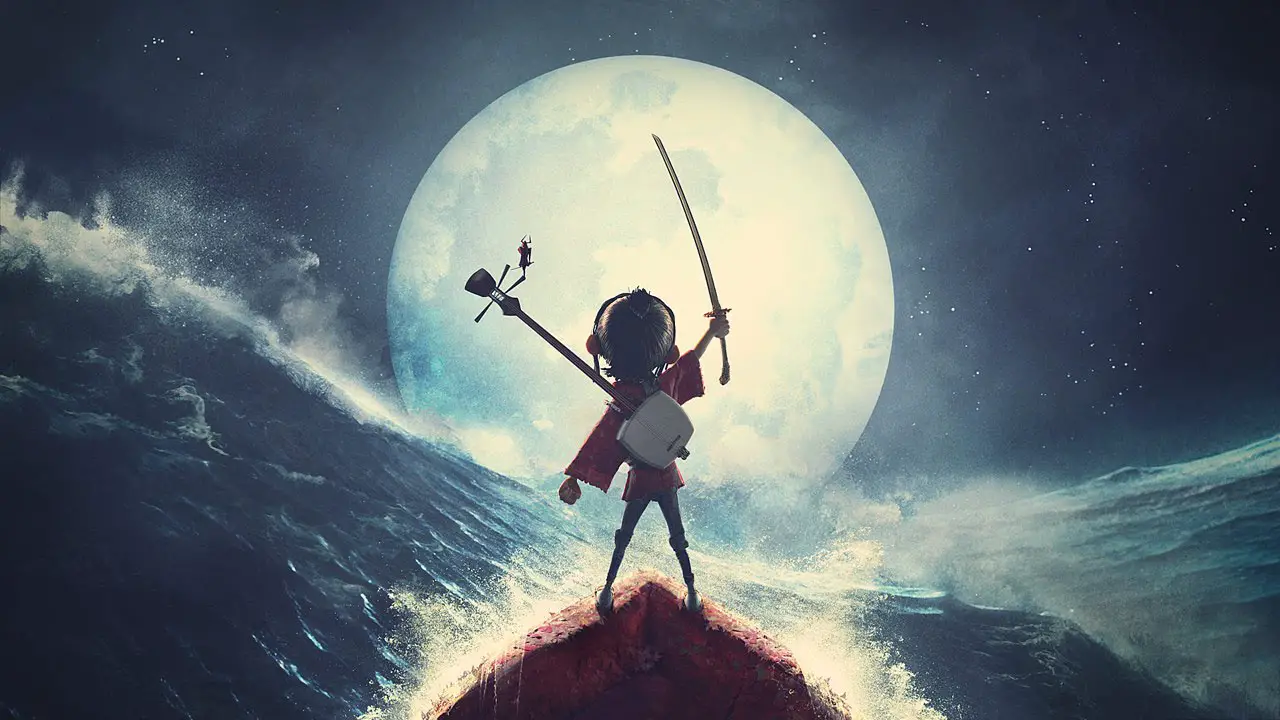Kubo and the Two Strings
The elegantly animated film about a young boy and his odd instrument is a heartwarming summer success.
By Katie Sanchez, University of Texas at San Antonio
“Kubo and the Two Strings” is an adventurous, epic film that takes place in Japan and focuses on Kubo, a one-eyed boy who cares for his mother.
Though his parent cautions Kubo against staying out late, the young boy finds himself at his father’s grave attempting to summon his passed spirit. However, in trying to do so, Kubo brings forth the evil spirits that his mother warned him about. Hearing Kubo’s cry for help, she comes to fight the villains, but sends Kubo away from the scene.
Once he wakes up, he faces Monkey, who was once a wooden carving that he called “Mr. Monkey.” Now it’s up to Kubo and Monkey to search for three magical pieces of armor that belonged to his late father so Kubo can battle his supernatural grandfather, the Moon King.
https://www.youtube.com/watch?v=p4-6qJzeb3A
As it is, the plot of the film is engaging because of how well it is executed, but there are other aspects that contribute to the film’s success. “Kubo” is a great film because many elements enhance the storytelling.
1. Magic
Even though Kubo’s enchanted shamisen is behind most of the magic that occurs throughout the movie, you never feel like it’s overused. Every time Kubo whips out his instrument you’ll think, “Oh snap! Things are about to get lit!” and his actions never fail to satisfy your assumption. The magical object wows you each moment it is utilized, leaving you amazed and wanting more. As previously hinted, his shamisen has a great amount of screen time, but it actually contributes to the story, so it has purpose.
There are various instances in the film where the shamisen takes a step back and allows you to indulge in the scene. In the very beginning of the film, you witness the power of the instrument as Kubo’s mother splits the ocean.
As the strings are strummed, a flash of glowing gold erupts from them, clashing with the sea and thus parting it. The wall of gold disintegrates while the water splashes around in the air and falls down to join its greater body.
Another instance in which the shamisen takes the back seat is when Kubo commands origami paper to come alive so that it can tell a story to the village. Not only is Kubo controlling the sheets with his magical item, but he is also playing it, which helps contribute to the story he’s telling. The paper’s movements and folds leave you in awe because it moves in graceful, majestic ways. This scene is probably one of the most magical scenes in the whole movie due to the complexity of the paper’s motions.
2. Plot Twists
Right when you think you know what is going to happen, the movie takes you for a spin. For example, a little after Kubo and Monkey start their journey, there is a suspicious, shadowy figure following them.

You’re led to believe that this stranger is a bad person, and such belief is justified when they kidnap Kubo. However, after Monkey chases the two, you discover that the person is actually a beetle who has no memory of who he is. To top it all off, Beetle wishes to help Kubo and Monkey on their journey.
Weird, right?
Though you experience one plot twist with Beetle, you are destined to discover yet another shocking fact near the end of the film, so you’re hit with another wave of surprise.
Now, Beetle isn’t the only character who brings about unpredictable scenarios, as Monkey has a few secrets of her own, most of which are more surprising than Beetle’s.
Essentially, there are numerous plot twists throughout the movie, but none of them feel contrived or unbelievable. All of the unexpected reveals contribute to the plot itself, and some even bring beautiful lessons.
3. Cultured
Not only does the film take place in Japan, but it also embraces the Japanese culture. The characters’ clothes, Kubo’s instrument, the evil sisters’ masks and so much more are all in tune with Japanese folklore. Having such customs in “Kubo” allows viewers to have context, which helps them better understand the plot and reasoning behind characters’ actions/mindsets. Without such background, not only would the film lack depth, but also spirit.
For instance, if it wasn’t for the Bon Festival scene, how else would people watching the film understand how Kubo brought back his parents? Not everyone is familiar with Japanese culture, so it’s nice that the audience has some background on it and are able to revel in it.
4. Adventurous Design
The movie takes you through a snowy plain, inside of a whale, under the ocean and many more complex, detailed settings. Each place has various colors and textures, each of which offers a setting as breathtaking as the last. LAIKA crafted each setting using different kinds of equipment to achieve a realistic look, and their effort is evident.
Probably the most epic scenes are when Kubo and his friends are attempting to acquire each piece of the magical armor set (so basically the whole film), and also the fighting scenes. Something always seems to go wrong as the characters grow close to each item, which results in some sort of battle. All of the combat scenes are heart-racing and enthralling because you grow nervous for the heroes’ safety. It doesn’t help that there’s more plot twists in these scenes, so you never know what may happen.
5. Flawless Stop-Motion Animation
The entire film was created using an animation technique called stop-motion, which is, perhaps, one of the most time-consuming animation styles.
To achieve a smooth movie, one must pay careful attention to detail when moving characters, sets and objects; otherwise, scenes will look choppy and lack the fluid and polished visuals stop-motion calls for.
LAIKA, the animation studio behind “Kubo,” did an excellent job with their animation, as none of the motions appeared abrupt or impossible.
From locks of hair flowing in the wind to the ocean’s waves, every moment was sleek and realistic.
There was never a time where you were kicked out of the movie and thought, “That’s weird” or “That’s not possible.” Essentially, the animation was so on point that you stayed invested in the film while reality only lingered in the back of your mind.
Want to take a peek on how intense the production of “Kubo” was? Check out this video that focuses on the construction of the film.










I think Laikas use of replacement faces looks chopy and cheap. The don’t use the smoother and more realistic silicone faces stop motion like Corpse Bride or King Kong.